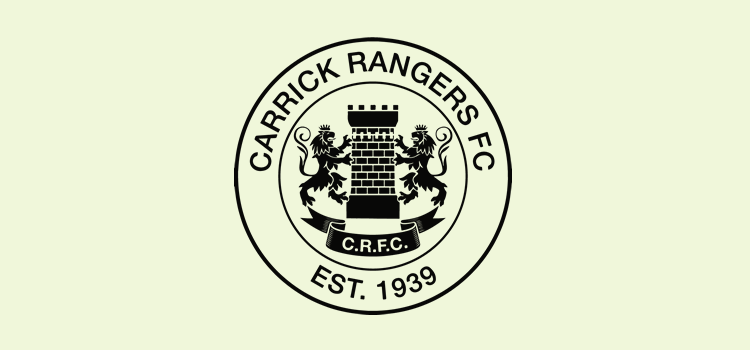Final installment of my trilogy on the development of football in Carrickfergus.
Part 3 – Rise, Fall and the Start of Something Big
Carrickfergus Athletic remained a Junior side for a short while before disbanding, but Barn entered the Junior League in 1892 and progressed through the Junior ranks, eventually reaching the top flight of local football when they were accepted to participate in the Irish League in 1923. Here, they played against the mighty Belfast teams of Linfield, Glentoran, Cliftonville and Belfast Celtic, amongst others. For a town with a population of around 5,000, matches regularly attracted 1,000 spectators with top ties seeing almost 3,000 cram into the Barn Field grounds.
While Irish League football was high profile as a spectator affair, within the town of Carrickfergus there was a great desire among young men to play football, and in the early 1920s the Carrickfergus & District Summer League was formed in which all players had to be amateurs.
Among its inaugural teams were Carrick Amateurs, Carrick Casuals, Minorca, Greenedge, Tramway Rangers, and Bubbles. Bubbles won the 1925 and 1926 Summer League titles and played in extensive friendlies. Barn Mills, another team linked to the James Taylors & Co. factory, began to participate in the Summer League from 1927.
Meanwhile, the finances required to sustain a team in the Irish League placed a strain on the Barn Committee. Professional players earned a decent wage, the ground required regular maintenance and the Government “entertainment” tax (introduced in 1916 to fund the war effort but not abolished until 1960) all took their toll on the running costs.
In 1927 the club took the decision to ask all its professional players to take a pay cut. Most refused, choosing instead to play in the Intermediate League, or lower, where they could still pick up a few pounds. The 1927/28 season was the club’s last in the Irish League, as its weakened squad, now entirely made up with amateur players, finished bottom of the league. At the conclusion of the campaign, the club folded.
By then, another factory team, Woodburn, formed by workers from the Woodburn Weaving Factory around the start of the century, had worked its way up through the grades to achieve Intermediate League standard, reaching the final of the 1923 Steel & Sons Cup competition.
Over the summer of 1928, a series of meetings took place between the officials of Barn and Woodburn with the aim of amalgamating and re-entering the Irish League. The Irish League, however, did not accept the plan, but the Intermediate League accepted the new Carrickfergus Association Football Club as a direct replacement for Woodburn in their competition.
It was a brief experiment which ended in farce a few years later.
During an Intermediate Cup tie at Broadway United, the linesman representing Carrickfergus (in those days the referee was an impartial appointee, but each club had a nominated linesman to assist with “out balls” for throw-ins, corners and bye-balls) was ordered from the field after zealously disputing a decision made by the referee.
The club were contacted by the Irish Football Association asking for the name of the linesman so disciplinary action could be applied. The club Secretary refused, and the authorities suspended him from football activities for life. The Secretary never appealed or requested re-instatement, and with his personal demise, the club folded.
Despite Barn, Woodburn and Carrickfergus AFC folding in quick succession, the Carrickfergus & District Summer League grew in popularity. Two of the most promising sides, Barn Mills and Bubbles, declared an interest in applying to the Belfast Minor League. The two sides were regular opponents in friendly games as well as within the Summer League, and it was in the post-match socialising after one of these friendlies in 1939 that Jim Milliken, an administrator with Barn Mills, and Archie Hamilton, a young goalkeeper with Bubbles, suggested that a merger would strengthen a bid for the Minor League.
A meeting was convened in Barn Reading Rooms in Carrickfergus, where the feasibility of creating a football team was discussed. There were enough fit and energetic menfolk in the town, and many regularly turned out for football teams in Belfast and beyond every Saturday. So, it was settled. A new team would be formed using the pooled resources of Barn Mills and Bubbles.
Now, a name was be needed. The name of the home town was an obvious starting point. Carrickfergus was a very long name, and had previously been used, but often the town’s name was shortened to ‘Carrick’ by locals.
Not a bad start. Now, something more sporting, dynamic and memorable was needed.
As ideas were bandied about, attention drew to a photo of a football team hanging proudly on the wall in the Barn Reading Room. It was of the 1938/39 Glasgow Rangers team that had just won its seventh Scottish League title of the decade. With knowing glances, rather than words exchanged, the choice became apparent. It just seemed to fit. It just seemed obvious. It just seemed right.
Without a ball kicked, a playing kit purchased, or a football pitch secured, Carrickfergus had a new club. Little did those founding fathers know what they had just unleashed on the world of football…..welcome to Carrick Rangers!
